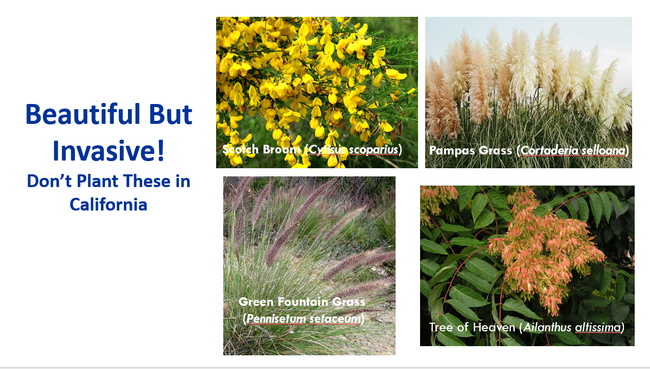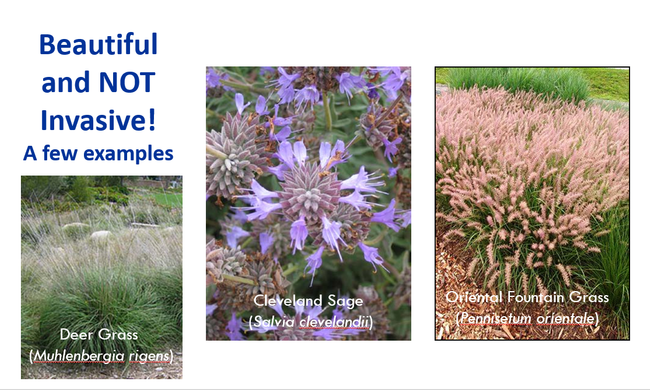
Posts Tagged: Spanish
Invasive Plants: Don't Encourage 'Bad Neighbors'
What do ice cream, potato chips, Scotch and Spanish Broom, and Tree of Heaven have in common? While they're all tempting to indulge in, less is more. In fact, plants such as Scotch, Spanish Broom, Tree of Heaven, Pampas Grass, Green Fountain Grass, and dozens of plants are all considered invasive plants in California. Simply put, they should not be planted. There are some great alternative plants that are better choices listed at the end of this blog.
Truth be told, I admit to falling madly in love with the Spanish Broom (Spartium junceum) shrubs adorning Highway 18 on my drive from San Bernardino to Lake Arrowhead in early spring 1984 right after my job interview for my current position. Being a “wet behind the ears” recently hatched graduate student from the Midwest I was truly in awe of their lovely yellow blooms and vowed to plant one if I got the chance to move to California. Fortunately, I found out very soon that, while the plantings were made on purpose, they were a mistake and needed to be removed due to their invasive nature.
While they were ‘recruited' from Europe and had what seemed like a perfect resumé (fast growth, lovely yellow flowers, adaptability to poor infertile soil and disease and insect-resistance), they didn't play well with others, a fatal flaw. In California, they were aggressive and crowded out native plantings. Fires only exacerbated the situation. After the 2003 burns, the Spanish Broom populations exploded, obliterating any remaining natives and taking an even larger area hostage. In summer 2010, the San Bernardino National Forest removed the plants in a costly but necessary $500,000 project under a partnership with the American Recovery and Reinvestment Act. Constant monitoring continues in the San Bernardino Mountains and other areas of the state to prevent its reestablishment which is challenging due to its ability to quickly resprout, seed longevity, and effective dispersal. It has definitely earned its ‘noxious weed' label!
This is just one example of the problems posed by invasive plants. In effect, they grow too well! They outcompete desirable plants in our gardens, lawns, and other urban and natural areas for water, nutrients, and space. They also shade sun-requiring plants. Threatened and endangered plant species and other California native plants are particularly vulnerable to their encroachment. (In most cases, invasive plants are non-native species.) Interestingly, our beloved state flower, the California poppy, is an invasive plant in New Zealand, Hawaii and other locations outside of California.
As urban gardeners, we can all greatly reduce the impact of the encroachment of invasive plants in our urban environments. Please don't plant invasive sane remove plantings on your property to stop their spread. Below are some great resources to learn more about invasive plants and find viable replacements:
California Invasive Plant Council: https://www.cal-ipc.org/
Don't Plant a Pest: https://www.cal-ipc.org/solutions/prevention/landscaping/dpp/
Invasive Plants of Southern California:https://www.cal-ipc.org/solutions/prevention/landscaping/dpp/?region=socal
PlantRight: https://plantright.org/about-invasive-plants/plant
Good Morning from a Sleepy Bumble Bee
Benjamin Franklin reportedly said: "Early to bed and early to rise, makes a man healthy, wealthy,...
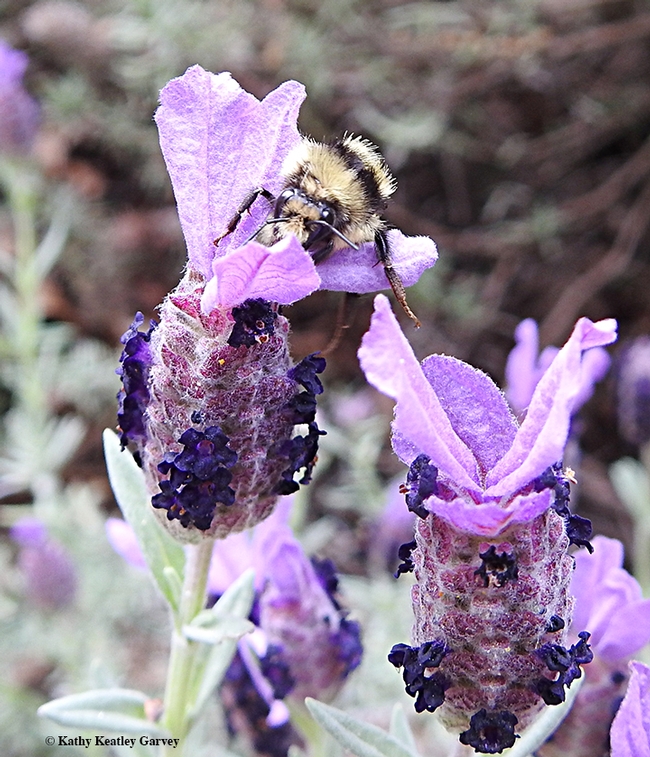
A bumble bee, Bombus melanopygus, commonly known as a "black-tailed bumble bee," awakens on a Spanish lavender in a Vacaville park. (Photo by Kathy Keatley Garvey)
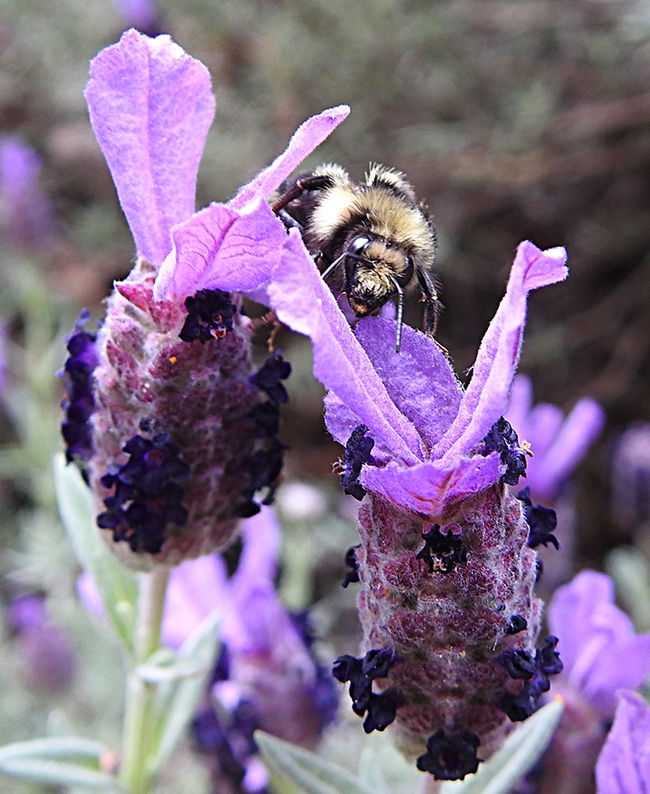
Good morning! The Bombus melanopygus peers over a Spanish lavender in a Vacaville park. (Photo by Kathy Keatley Garvey)
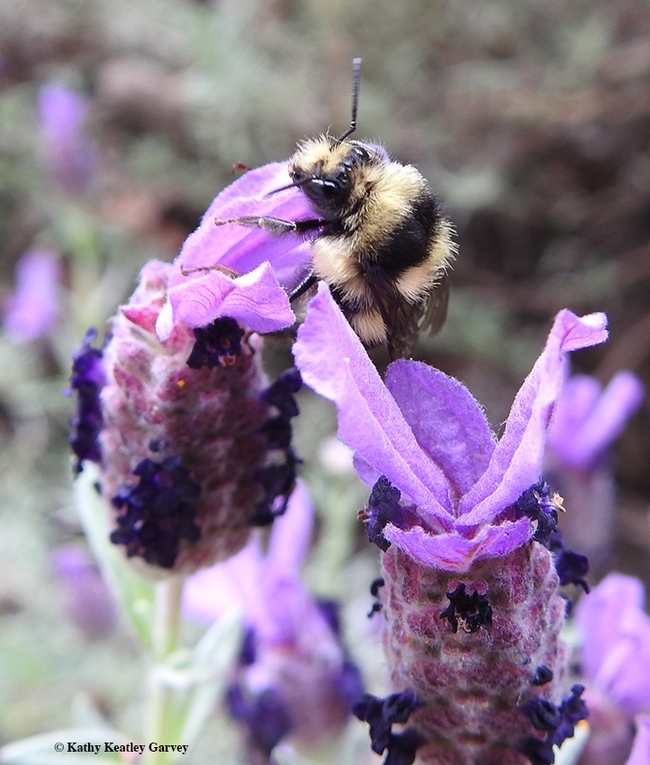
Time to forage! The Bombus melanopygus peers investigages a Spanish lavender in a Vacaville park. (Photo by Kathy Keatley Garvey)
UC Davis Arboretum Plant Sale: Think Pollinators!
Think bees. Think butterflies. Think plants that will attract them. The UC Davis Arboretum and...
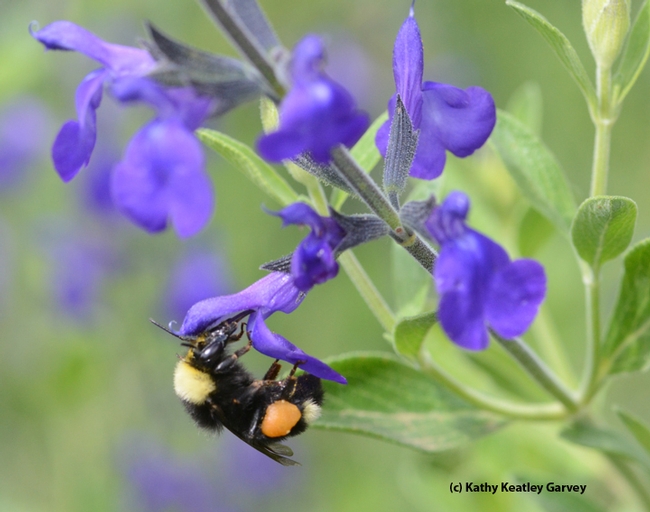
A black-faced bumble bee, Bombus californicus, forages on Purple Ginny salvia (sage). Sages are popular at the UC Davis Arboretum Plant Sales.(Photo by Kathy Keatley Garvey)
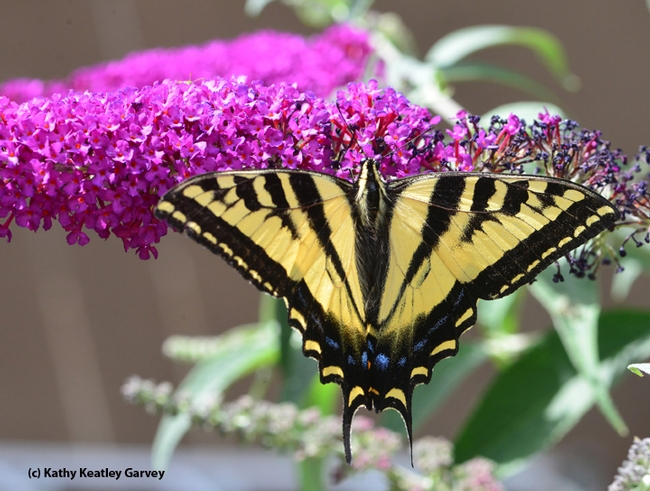
A Western tiger swallowtail, Papilio rutulus, sips nectars from a butterfly bush, Buddleia davidii. (Photo by Kathy Keatley Garvey)
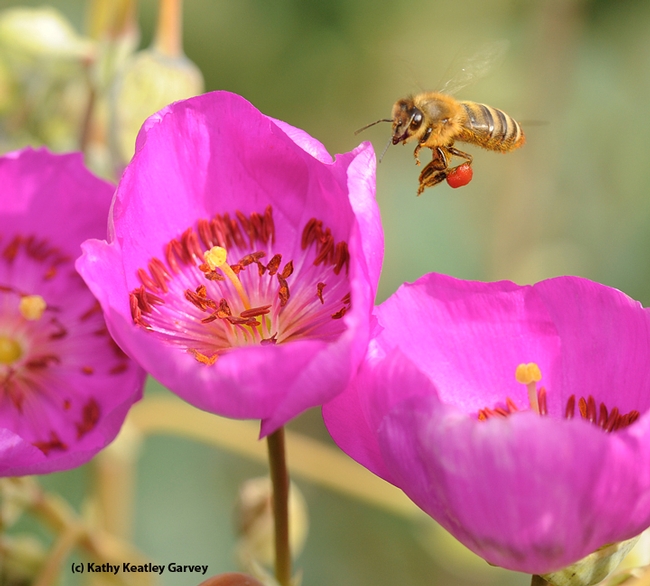
A pollen-packing honey bee heads for rock purslane, Calandrinia grandiflora. This is one of the plants available at the UC Davis Arboretum Plant Sale on Oct. 7. The plant yields red pollen. (Photo by Kathy Keatley Garvey)
Why Dead Bees Can Sting
Can dead bees sting? Yes, they can. Here's the scenario: Our pollinator garden is buzzing with the...
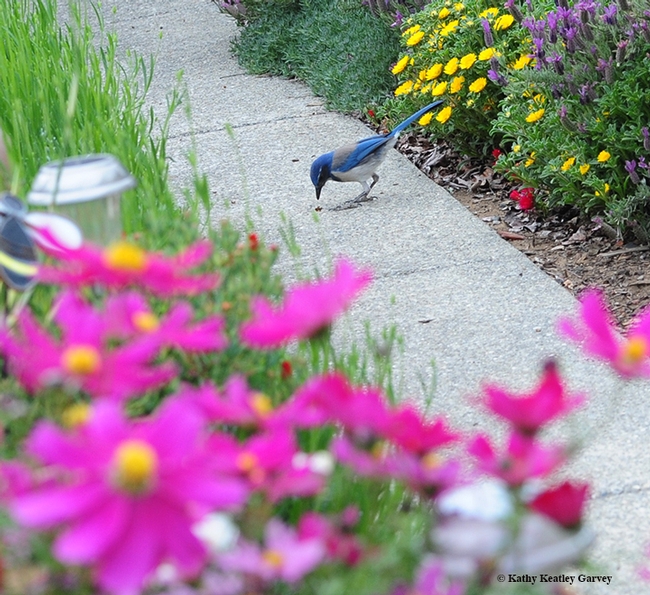
A California scrub jay nails a honey bee. (Photo by Kathy Keatley Garvey)
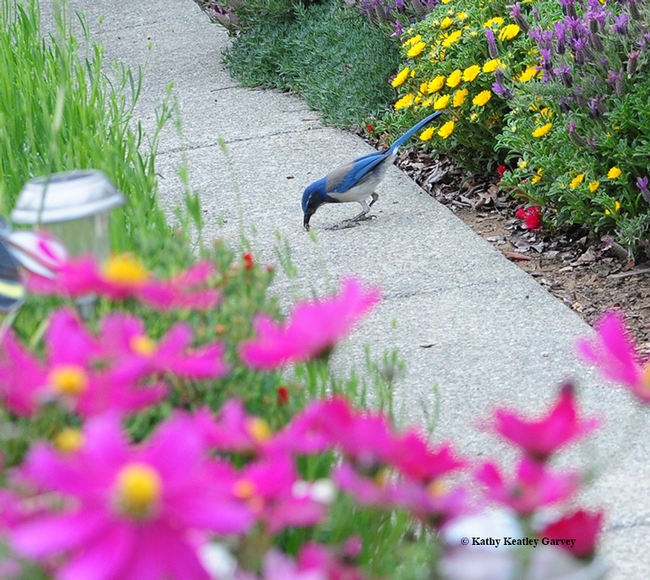
The California scrub jay decapitates the honey bee, avoiding the abdomen with the stinger. (Photo by Kathy Keatley Garvey)
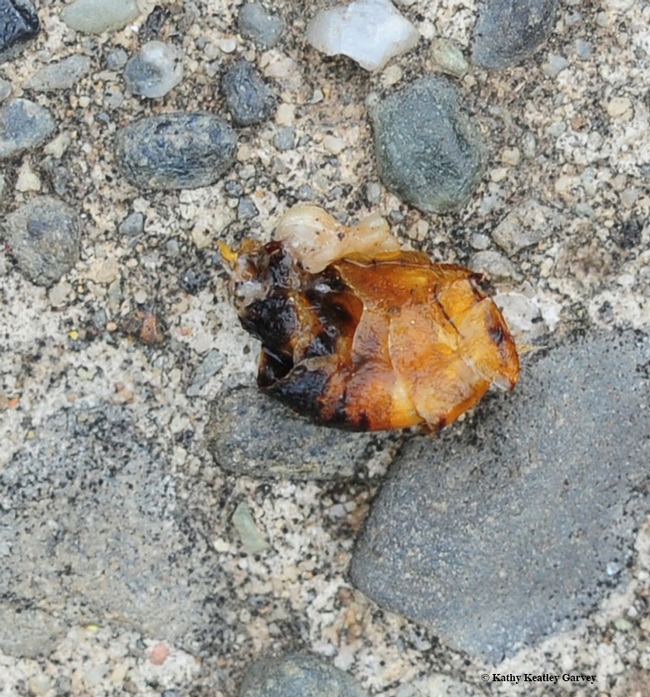
This is what was left of the honey bee from the photos above. (Photo by Kathy Keatley Garvey)

On UC Davis Picnic Day, scrub jays had a picnic of their own in the author's yard, decapitating honey bees, and leaving behind the abdomens. Note the stingers. (Photo by Kathy Keatley Garvey)
Ol' Blue Eyes: A Blue-Eyed Darner
Ol' Blue Eyes. What a treat to see. No, not an old movie starring Ol' Blue Eyes himself, Frank...
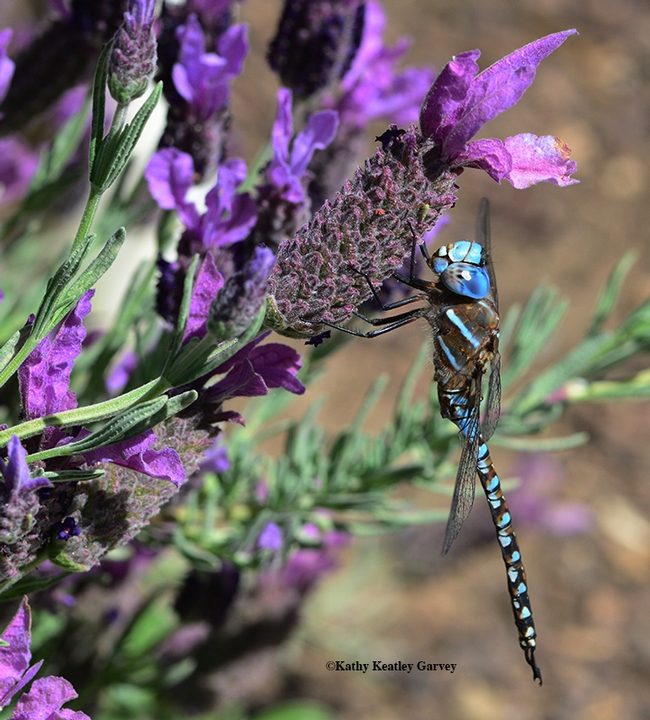
A Rhionaeschna multicolor blue-eyed darner, Aeshna multicolor, soaking up sun on a Spanish lavender in Vacaville, Calif. (Photo by Kathy Keatley Garvey)
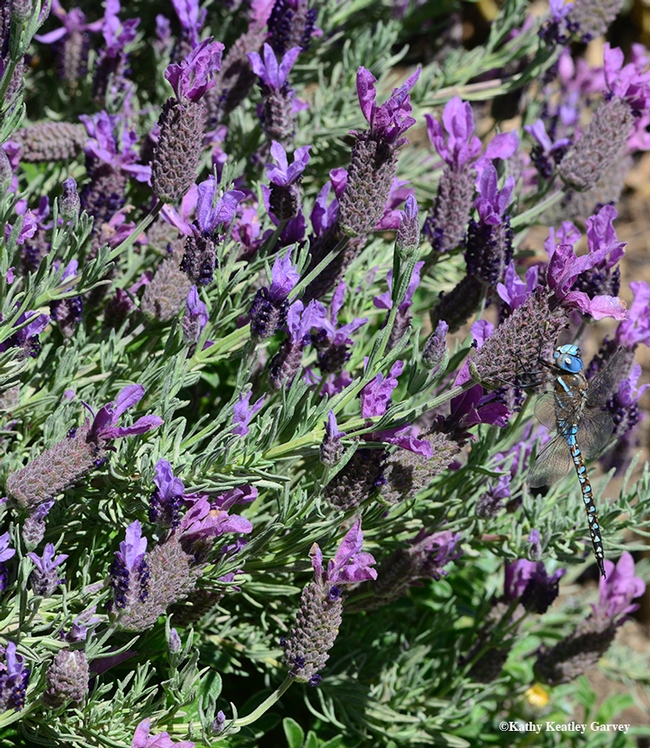
Find the blue-eyed darner in the Spanish lavender! (Photo by Kathy Keatley Garvey)

